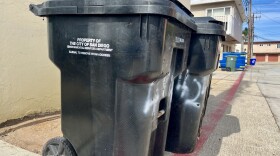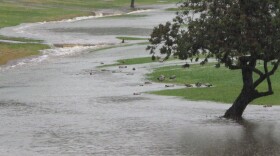Mayor Jack Porter arrived at the only post office in Bisbee, Ariz., on a red motorcycle. Getting off, he walked with a slight limp, the only lingering effect of a frightening morning last July when he awoke with numbness in his right side and slurred speech.
The paramedics had rushed him to the only emergency room in rural Bisbee at the Copper Queen Community Hospital. There, doctors determined he was having a stroke and gave him tPA, a clot-busting drug that, when administered within a tight timeframe, can minimize a stroke's effects.
Rural hospitals in Arizona rarely give tPA because they don't have stroke specialists; instead, they transfer patients immediately by helicopter to Tucson or Phoenix. But physicians at Copper Queen have a protocol that allows them to work with specialists remotely. So for Porter, that meant doctors 200 miles away at the Mayo Clinic in Scottsdale diagnosed his condition over a video link, allowing Copper Queen physicians to administer the drug on the spot, saving precious time.
"The right decisions were made and I'm alive and walking today," says Porter. "If things hadn't gone well, I could have been another nursing home candidate."
Making A Rural Hospital Profitable
Reaching out to specialists in Scottsdale and across the country is one way the hospital is working hard to offer residents better care. It's also a typical move by Copper Queen's CEO Jim Dickson, who has transformed the nonprofit rural hospital with just 15 beds from a struggling facility into a thriving business.
Over the past four years, the hospital has earned surplus revenues of 5 to 10 percent, a margin much higher than rural hospital averages. It is a success that Dickson and other hospital officials fear won't continue as Arizona reduces overall health spending by $500 million in 2012.
Making the hospital profitable is tough. For about 100 years, Bisbee was a copper mining town. Scars and holes in the rock mark the spots where copper was once plentiful. But now the town of 5,500 people, just five miles from the Mexican border, has become a haven for hippies and tourists, the streets lined with art galleries and antique shops. People in the town and surrounding Cochise County tend to be low income and often suffer from chronic illnesses. Many are also uninsured.
Nearly everyone agrees that Dickson is a savvy businessman. His secret, he says, is carefully tailoring the health care he provides to what the community needs and looking for opportunities to generate cash. He has trimmed services that don't make sense financially — and made some unpopular choices, such as closing the community's only labor and delivery facility, forcing women to travel an additional 25 miles to Sierra Vista.
He has even managed to keep costs low so that the hospital makes money from services provided to people enrolled in the state's Medicaid managed-care plan, which pays far less than most private insurers. More than 30 percent of the hospital's patients are insured through Medicaid.
It's really hard to get excited about 2014 when we're worried about now.
Dickson joined purchasing organizations with larger hospitals in order to buy lower-cost medical equipment, and he drove up his volume of patient services by opening three rural health clinics across the region.
In addition to primary care doctors, each clinic has an X-ray machine, a lab and a physical therapist. Those ancillary services generate income in addition to the basic doctor visit. "There's one dollar for a patient visit, but three to four for diagnostics," he said.
Lab tests are then sent to the main hospital for processing rather than to third-party companies to keep the testing profits in house.
Urban Salaries For Rural Doctors
He's also skillfully built a strong workforce, while many rural hospitals have difficulty recruiting. With a full-time staff of 170, Copper Queen is the city's second-largest employer.
Alan Morgan, chief executive officer of National Rural Health Association in Washington, explains that the biggest challenge for rural hospitals is, "Workforce, workforce, workforce. For small rural communities, attracting and maintaining a quality health-care professional within the facility is an ongoing challenge." Doctors are often hesitant to work in rural areas because of lifestyle issues, and rural areas tend to have the most significant provider shortages.
Dickson employs 12 doctors, but pays them salaries similar to those they would earn in an urban hospital. The higher salaries, he says, enable him to attract the best doctors and keep them working in the hospital.
He has only two specialists: a general surgeon and a radiologist. When patients need to see a cardiologist, neurologist or other specialist, they often travel 100 miles north to Tucson. Using telemedicine has allowed Dickson to keep more patients and revenue at Copper Queen.
Hospital Payments To Drop Soon
But despite all of his successes, Dickson is anticipating some hard times. The state has begun cutting coverage for 140,000 Medicaid enrollees. In addition, 5 percent of Medicaid payments to doctors and hospitals will be cut beginning Oct. 1, which comes on the heels of another 5-percent cut in April.
Altogether, the Arizona Hospital and Healthcare Association estimates that the new state budget reduces hospital payments by $531 million, including more than $1 million for Copper Queen. At the same time, hospitals are supposed to be gearing up for the federal health care overhaul, including a major Medicaid expansion in 2014. "It's really hard to get excited about 2014 when we're worried about now," said the association's president, Laurie Liles.
Dickson says the cuts are likely to wipe out his surplus, but he believes he will still be able to offer the same level of services. Other hospitals may not be so fortunate. "I've had several CEOs tell me they'll close their doors," he explains. "That means no more health care in those communities."
But Dickson is preparing. Patients from a nearby hospital will likely travel the extra 25 minutes to Copper Queen. So Dickson is planning to add an extra 10 beds in a new wing. In fact, he says, if the hospital closes, it could provide him a new business opportunity: a free-standing Copper Queen emergency room in Douglas.
Copyright 2023 Kaiser Health News. To see more, visit Kaiser Health News. 9(MDAzMjM2NDYzMDEyMzc1Njk5NjAxNzY3OQ001))





